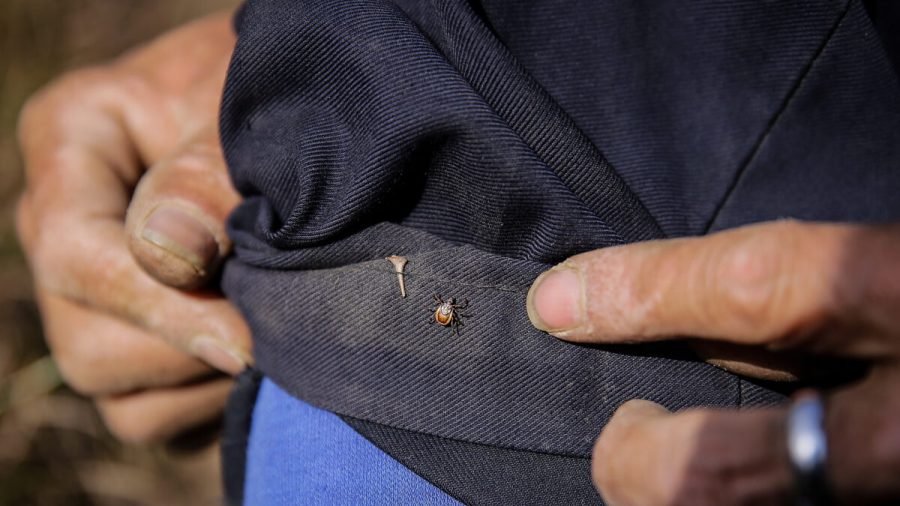A contagious, tick-borne virus that first emerged in China has recently killed seven while infecting dozens in the country.
The virus usually spreads between May and October in mountainous regions, and has a death rate of 5 to 17 percent, said Chuang Jen-Hsiang, the deputy director-general of Taiwan Centers for Disease Control (CDC), at an Aug. 5 press conference.
The virus has sickened at least 62 over the first half of the year, including 37 in the coastal Chinese province of Jiangsu and 23 in neighboring Anhui Province, five of whom have died, according to local media. Two more died in central Zhejiang Province, which borders Jiangsu.
The latest patient hospitalized was a 65-year-old tea grower surnamed Wang from Jiangsu’s Nanjing city. According to local media, she began feeling unwell about two months ago, after gathering tea leaves from her plantation.
In a few days, she began having symptoms of shivers, high fever, physical fatigue, and wet coughs. Her body temperature went up to 104 Fahrenheit at times. She was diagnosed with severe fever with thrombocytopenia syndrome (SFTS), also known as Huaiyangshan banyangvirus, characterized by low platelet and white cell counts.
Currently, there is no vaccine available to treat the disease.
Jin Ke, a surgeon at Jiangsu People’s Hospital, told local media that her organs were failing by the time she was transferred to the infectious diseases department. She recovered after about a month of hospital treatment.
Mr. Fang, another patient from Yiwu city of Zhejiang Province, had symptoms of high fever, diarrhea, and loss of appetite in late June, which did not go away after he took anti-inflammatory pills. His white cell and platelet count had dropped to about a fourth and a half of normal levels respectively by the time he went to the local hospital.
The city’s CDC has advised people to use insect repellent, wear long pants when going outdoors, tighten pant cuffs around the ankles, and avoid lying on the grass.
While tick bites remain the primary transmission route for the disease, Zhejiang-based bunyavirus (a family of anthropod-borne viruses) expert Sheng Jifang warned that it can also transmit among humans, citing previous instances of infections through mucus contact or contact with a patient’s blood.
Ticks often live in forests, bushes, open pasture fields, grasslands, and hills, Sheng said.

The virus first appeared in China’s Henan Province in 2009. Since then, cases have been discovered in South Korea, Japan, and Vietnam. Taiwan detected its first SFTS case in November 2019, a man around 70 years old in northern Taiwan who had no recent travel history. He was hospitalized following nine days of fever and vomiting.
Taiwan authorities have listed SFTS as a notifiable infectious disease since April, and are requiring doctors to report to the government any relevant cases in 24 hours after its emergence.
In the event of a tick bite, doctors have advised people to use a tweezer or seek medical help rather than pulling out the insect by hand, which could cause the bug’s hooks to break off and remain in the body.
Swelling, blisters, rashes, and bruises often form around the area of the bites. The incubation period for the virus is seven to 14 days, according to the Taiwan CDC.
From The Epoch Times

